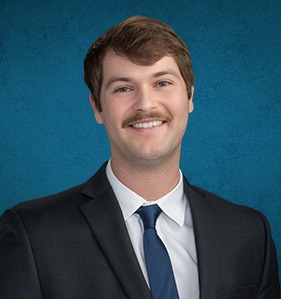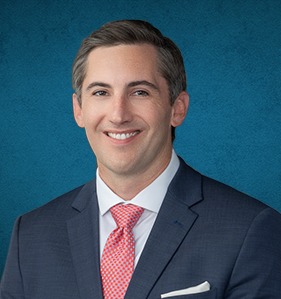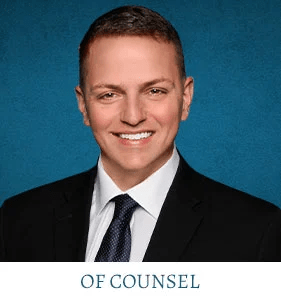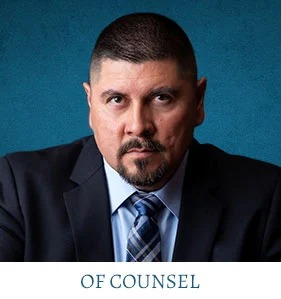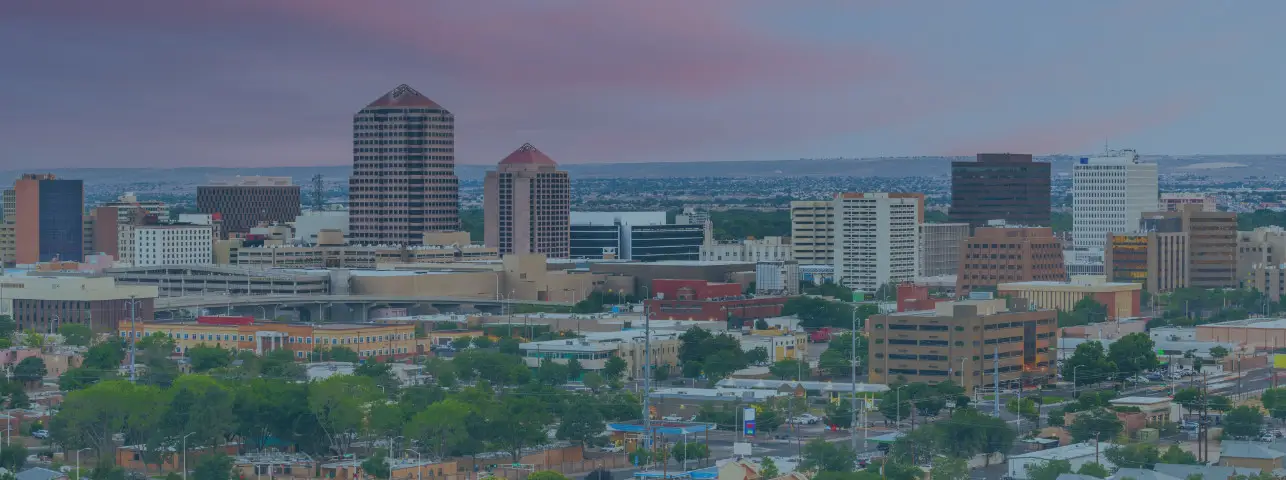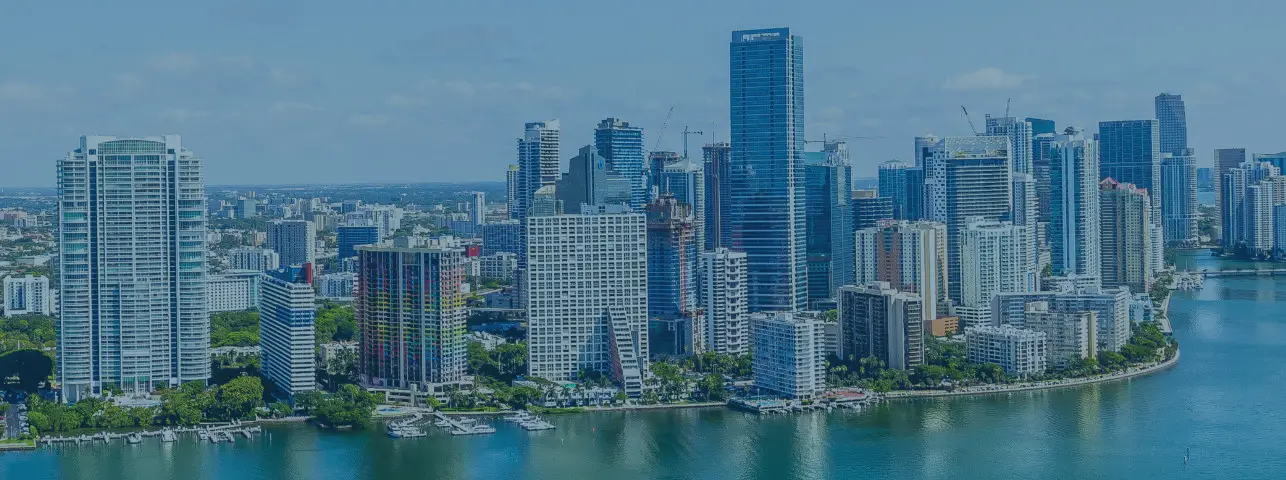CALL (800) 863-5312 TO SPEAK WITH MOTORCYCLE ACCIDENT LAWYERS IN COLORADO FOR FREE
Any vehicle accident can often be devastating, especially if you suffered catastrophic injuries or the loss of a loved one. Motorcycles generally offer much less protection than vehicles, putting you or your loved one at a higher risk of suffering catastrophic or fatal injuries. That’s why it’s important to call Colorado motorcycle accident lawyers if you need help.
If you were injured in a motorcycle accident, or you lost a loved one in a motorcycle crash, you should contact the experienced Colorado motorcycle accident injury attorneys from Zinda Law Group at (800) 863-5312 today for a free consultation. If we are not able to win your case, you will not owe us anything.
HOW IS A MOTORCYCLE ACCIDENT DIFFERENT FROM A CAR ACCIDENT, ACCORDING TO COLORADO MOTORCYCLE ACCIDENT LAWYERS?
While any vehicle accident can be serious and potentially cause catastrophic or fatal injuries, motorcycle accidents may be far more dangerous than car accidents. For example, the Colorado Department of Transportation (CODOT) reported a total of 103 motorcycle fatalities in 2019, with fatalities up 12% in 2020 as of September 2020. Further, CODOT reported that while motorcyclists only represent just 3% of all vehicles on Colorado’s roadways, motorcyclists make up approximately 23% of all Colorado fatalities on its roadways. Finally, CODOT reported that El Paso, Adams, and Jefferson were the top three counties in 2020 with the most motorcycle deaths.
According to the National Highway Traffic Safety Administration, motorcyclists are approximately 28% more likely to die in a traffic crash than people in passenger vehicles. Meanwhile, a study by the National Center for Biotechnology Information published in 2017 reported that over half of all motorcycle accident fatalities were caused by head or brain trauma. This trauma may include concussions, brain hemorrhages, skull trauma or skull fractures, or other head or traumatic brain injuries.
Finally, motorcycle accidents may also require your motorcycle accident injury lawyer in Colorado to overcome negative stereotypes held by insurance company representatives or members of a jury to prove that the other party’s negligence was responsible for causing your accident.
Read More: Colorado Spinal Cord Injury Attorneys
Why Motorcycle Accidents May Be More Dangerous
Passenger vehicles may generally be safer than motorcycles for a variety of reasons. Most importantly, vehicles typically offer much more protection to passengers than a motorcycle, as the vehicle can absorb much of the impact in a collision and protect passengers, while a motorcycle does not offer this same inherent protection. In motorcycle accidents, a motorcyclist is more likely to be thrown from the vehicle, frequently leading to head injuries. Unlike passengers in vehicles, the only protection a motorcyclist may have is a helmet and any knee or elbow pads the rider may have been wearing. Further, the much smaller size of motorcycles compared to cars may make it much harder for other vehicles on the road to see the motorcycle and avoid a collision compared to larger vehicles.
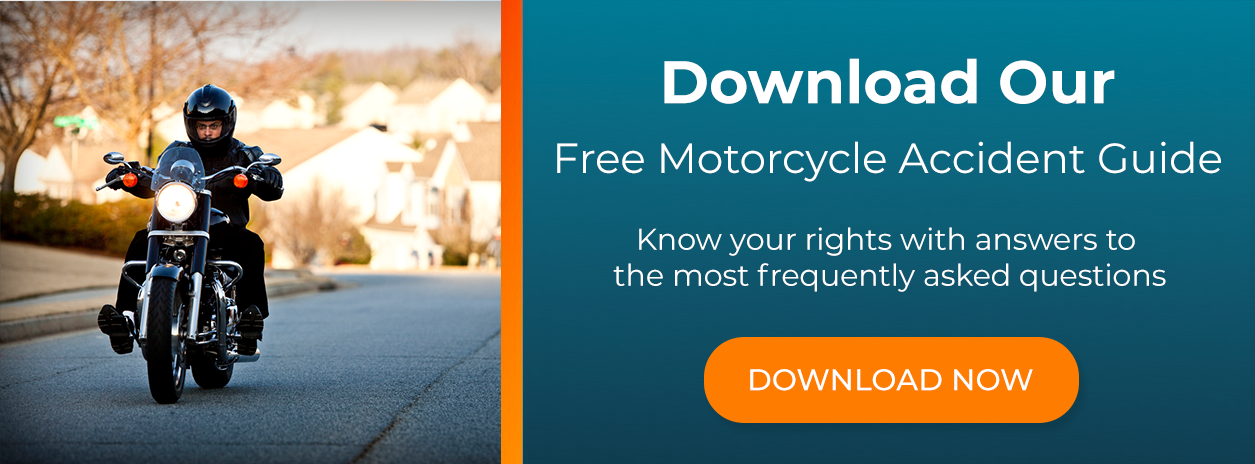
COMMON CAUSES OF COLORADO MOTORCYCLE ACCIDENTS
Motorcycle accidents often occur as a result of a variety of causes, including:
- Vehicles making a left turn in front of a motorcyclist, often because the vehicle’s driver fails to see the motorcyclist first because of distractions or inattention
- Distracted drivers fail to notice a stopped motorcycle in front of them and rear-end the motorcyclist
- Alcohol is a common factor in many motorcycle accidents as intoxicated drivers may be slower to react or fail to notice the motorcyclist
- As with many car accidents, speeding is also a very common cause of motorcycle accidents, as drivers who are speeding reduce the amount of time they may have to react to a motorcyclist stopping or turning in front of them or otherwise fail to avoid crashing into a motorcyclist
- Some motorcycle accidents may be caused by parked drivers failing to closely look for motorcyclists before opening their car door in front of an oncoming motorcyclist, causing the motorcyclist to crash into the door
- Many drivers of passenger vehicles or commercial trucks may fail to see a motorcycle in their blind spots, causing the driver to change lanes directly into a motorcyclist
- Some motorcycle accidents may also be the result of defects in the motorcycle itself, such as manufacturing or design defects in the motorcycle, as poorly manufactured motorcycles or parts may lead to serious accidents.
- Poor road conditions and inclement weather, like black ice, can also cause motorcycle accidents.
Meanwhile, one of the leading causes of avoidable deaths in motorcycle accidents is the failure to wear a helmet by the motorcycle rider, as the NHTSA estimated that helmets saved about 1,872 motorcyclists’ lives in 2017, while approximately 749 additional lives could have been saved if every motorcyclist had properly worn a helmet.
HOW MUCH MAY YOUR MOTORCYCLE ACCIDENT CASE BE WORTH?
The amount of compensation that you may be entitled to for your injuries and damages suffered in the motorcycle accident varies from case to case depending on a variety of factors. Your Colorado motorcycle accident injury attorney may help you gather the necessary documentation to prove your claim for each of these types of the case. However, you may be able to seek compensation for both economic and non-economic damages sustained as a result of the evidence, including compensation for:
Economic Damages
Medical bills
Any medical expenses you incurred in diagnosing or treating your injuries suffered in the accident will generally be included in the compensation you may be entitled to. This compensation may include:
- Bills for any ambulance trips or hospital stays
- Testing to diagnose any injuries, such as x-rays, blood tests, or scans
- Physical therapy
- Prescription costs or costs of any assistance devices required because of a disability caused by the accident
- Nursing care, such as home care or similar expenses if you require a full-time or part-time caregiver after your accident
Property damage
Property damage may include the cost to repair your motorcycle or replace it if it may be beyond repair, as well as any other possible property damages.
Lost wages
If you were forced to miss any time from work after your motorcycle accident, whether to seek treatment for your injuries or while recovering from your injuries. You may be entitled to compensation for any income you lost from this time missed from work.
Lost career potential
You may also be able to pursue compensation if your accident caused you to suffer a disability that may prevent you from earning the same level of income as you may have been making before the accident.
Non-Economic Damages
Pain and suffering
You may also be able to seek compensation for any pain and suffering caused by your injuries. This may include the emotional anguish or mental harm you suffered while recovering from your injuries. The amount of compensation you may be entitled to for pain and suffering may vary based on the severity of your injuries, the length of time it takes for you to recover from those injuries, any psychological disorders that may have been caused by the accident, such as PTSD, or similar trauma.
HOW CAN MY LAWYER HELP ME?
By hiring an experienced motorcycle accident injury lawyer in Colorado, you gain the advantage of your attorney’s skill and experience helping other accident victims seek the compensation they may be entitled to. The skilled team at Zinda Law Group may handle your case while allowing you to focus on your physical recovery from your injuries. Your lawyer may help you preserve any available evidence in your possession, such as any photographs of the accident or your injuries as well as the accident report you may have received after the accident. Further, your attorney may help you better understand your legal options, including filing a claim with the insurance company or filing a personal injury lawsuit against the other party involved in the accident as well as any other party’s who may be liable for your injuries such as the other driver’s employer. A motorcycle accident injury attorney in Colorado may also provide a variety of other services as necessary to pursue your claim, such as:
- Thoroughly investigating the accident and gathering as much evidence as possible to support your claim
- Negotiating with the other party or their insurance company
- Taking your case to trial
COLORADO STATUTE OF LIMITATIONS
Motorcycle accidents in Colorado are subject to the same statute of limitations as car accidents or other personal injury lawsuits. This statute of limitations serves as the legal time frame within which you can file a lawsuit. In Colorado, the statute of limitations for motorcycle accidents is three years from the date of the accident, pursuant to Colorado Revised Statute 13-80-101. This statute of limitations means that you will have three years from the date of your motorcycle accident to file any lawsuit, as any lawsuit filed after this time period will likely not be allowed to go forward.
However, there are limited exceptions that may allow you to file a claim even after three years has passed since the accident. For example, if you were a minor at the time of the accident, the statute of limitations may be tolled until you turn 18, which means it will not begin running until your 18th birthday, from which you will then have three years to file a lawsuit. Finally, if the accident resulted in the death of your loved one, your lawsuit may be a wrongful death case, in which the statute of limitations will be only two years from the date of the accident, rather than three years allowed for other personal injury lawsuits in Colorado.
CONSULT THE COLORADO MOTORCYCLE ACCIDENT LAWYERS AT ZINDA LAW GROUP TODAY
At Zinda Law Group, we have a team of motorcycle accident attorneys who may be able to help you pursue any compensation you or your loved one may be entitled to. Our experienced personal injury lawyers may help you investigate the accident and file a personal injury lawsuit to seek compensation. Our experienced team of motorcycle accident injury lawyers in Colorado may be able to help you if you or a loved one have been injured in a motorcycle accident. Our Colorado personal injury attorneys have years of experience helping our clients seek the maximum compensation they may be entitled to after being injured in a motorcycle accident caused by the other party.
Call (800) 863-5312 today for a free consultation with one of our experienced personal injury lawyers. You will not pay anything unless we can win your case. That’s our No Win, No Fee Guarantee.
Meetings with attorneys by appointment only.
Additional Links:
- Arvada Personal Injury Lawyers
- Aurora Personal Injury Lawyers
- Boulder Motorcycle Accident Lawyers
- Broomfield
- Colorado Springs Motorcycle Accident Lawyers
- Denver Motorcycle Accident Lawyers
- Durango
- Englewood
- Fort Collins Motorcycle Accident Lawyers
- Grand Junction
- Greely Personal Injury Lawyers
- Highlands Ranch Personal Injury Lawyers
- Lakewood Personal Injury Lawyers
- Longmont Personal Injury Lawyers
- Loveland
- Northglenn
- Parker Personal Injury Lawyers
- Pueblo
- Thornton Personal Injury Lawyers
- Westminster Personal Injury Lawyers
- Wheat Ridge










